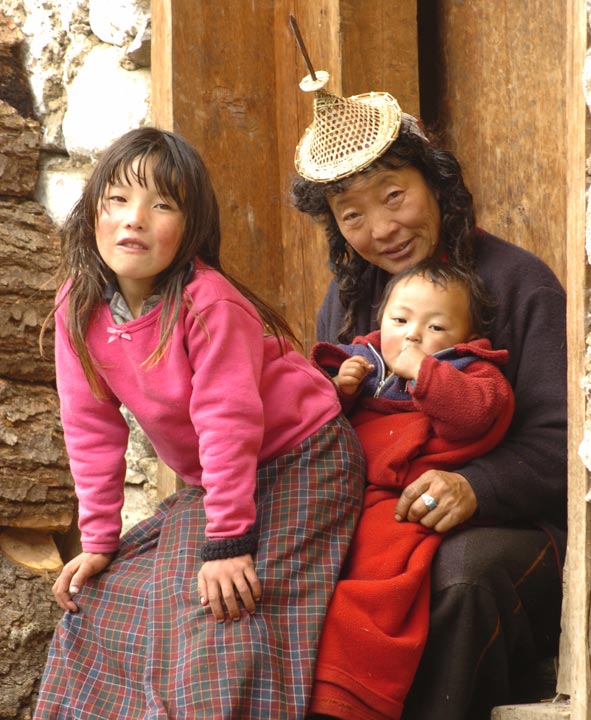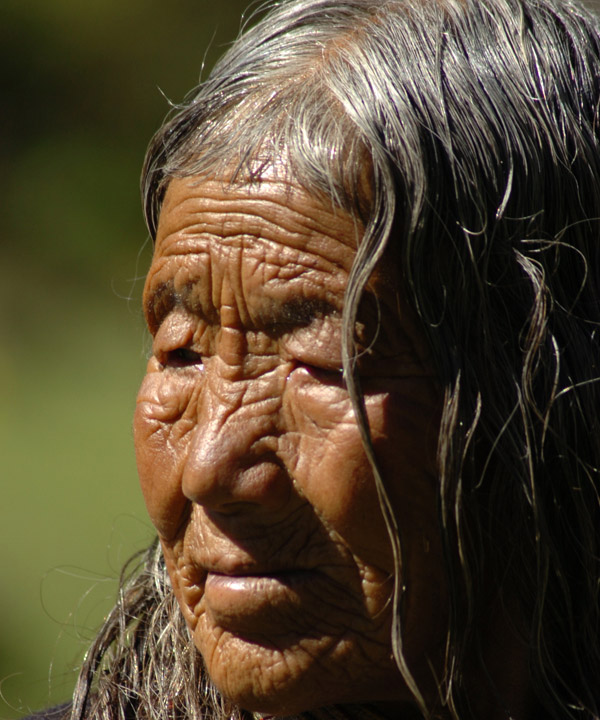簡單的生活
喜歡簡單生活,想到什麽就寫點東西。The Layap
The villages of Laya and Lunana in the Bhutanese Himalayas are some of the highest and most remote human settlements on earth. The people who live there, the Layaps and the Lunaps, are semi-nomadic yak herders who spend time between the villages and the high altitude yak herding camps. The villages and yak camps cling to the sides of immense river valleys and reach altitudes of 6,000m where resources are few and hardiness is a pre-requisite for survival. In Lunana the people have no contact with the outside world for seven months of the year, isolated by a combination of impenetrable harsh winter weather and treacherous high mountain passes.
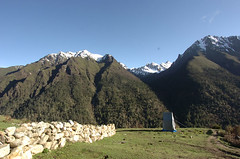
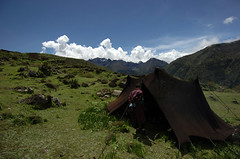
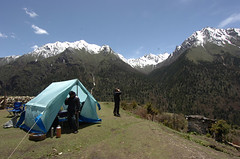
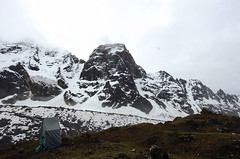
Daily Life
The Lunap and Layap people number aroud 3,000. Just over 50% of these are Lunaps. The villages are made up of simple painted wood and stone houses with the weallthier families owning the bigger houses. In Laya some of the larger houses have two storeys, the ground floor used as stables for their animals, who act as a central heating system for the living quarters above. There is obviously a clear welth gap between the poorer Lunaps and the wealthier Layaps, with Layaps often having rice supplies piled high in their homes as a symbol of wealth. Layaps have been known to look down on Lunaps for this reason and there has been hostility between the two groups in the past. Travellers' tales often tell of the Lunaps giving a frosty reception to outsiders, others tell of a welcoming people who are proud of their culture but secretive about its processes.
Polyandry is often practiced in these communities. A woman can be married to more than one man at the same time. Sometimes the cohusbands are brothers. By using this system a family can pool its resources-one husband can be away on a trading mission whist the other is able to help tend to the yaks at home, and the family land is not split up from one generation to the next.

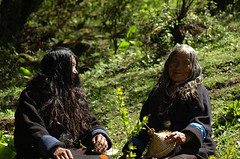

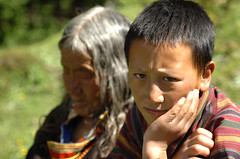
It is not only the yaks that are central to the way of life in these communities. Agriculture is another important means of survival in both the regions. Cillage life will often revolve around the growing of barley, buckwheat, mustard and wheat. Although such argiculture is not as reliable as yak herding, it is sitll very important . Other activities include milking and producing butter/cheese, making wool products such as clothing or materal for new tents. constructing new stone houses and producing and selling souvenirs.
The children in Laya and Lunana can attend school if the wish, although families sometimes choose to educate the children themselves. There are basic health facilities in both Laya and Lunana but often the health offices are only consulted as a last resort after traditional remedies have been used. In amongst all the requirements of a busy daily schedule the Layaps also work with the small number of tourists that move through the area during good weather.

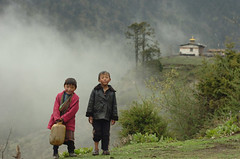
Outside of the villages lies the satellite yak camps. These exist at up to 6,000m and form an essential part of the Lunap/Layap way of life as it is movement between these caps that allows them to let their cattle graze different pastures sustainably. The yak tents, made of tightly woven yak wool, seem to defy the laws of physics. Natural light can get in through the large holes in the weaving and somke can escape. However, at the same time the structures are one hundred percent waterproof. The people claim that the wool itself has been blessed by highly esteemed ancient spiritual figures and it is this blessing which gives the wool its miraculous quality. DUe to extreme weather some yak camps are only occupied in the Himalyan summer. For both Layaps and Lunaps there is regular movement between village and yak camp.
Another central element to the Layap and Lunap way of life is movement. They are a semi nomadic people and move between yak camp and village, between pastures and town in search of winter work. When moving from pasture to pasture the people call on their ancestral knowledge of their environment to avoid over-grazing. When moving down to warmer towns in the winter the people will stay with host families where labour and yak products are exchanged for a place to stay. All this migration shows how adaptable Laysps and Lunaps are to extreme environments. They use initiative and age-old knowledge to make shelter in caves and rocky outcrops away from treacherous Himalayan weather.
One specific type of expedition that Lunaps and Layaps lead is the search for Yigatso Gimbo in high altitude valleys. Yigatso Gimbo is a cordycep-half caterpillar, half fungus and is renowned as a medicinal remedy across this region of the Himalayas. It can fetch huge sums of money for those collecting it and during June/July there is a gold-rush in certain valleys. Some say that the Ygastso Gimbo is an aphrodisiac but the people themselves just seem to use it as a means of easing rheumatism and general muscle pain. The cordycep is often fried in butter, added to arra (local whiskey) and then drunk
